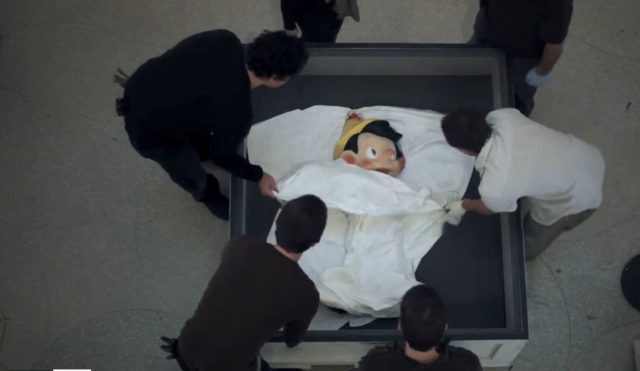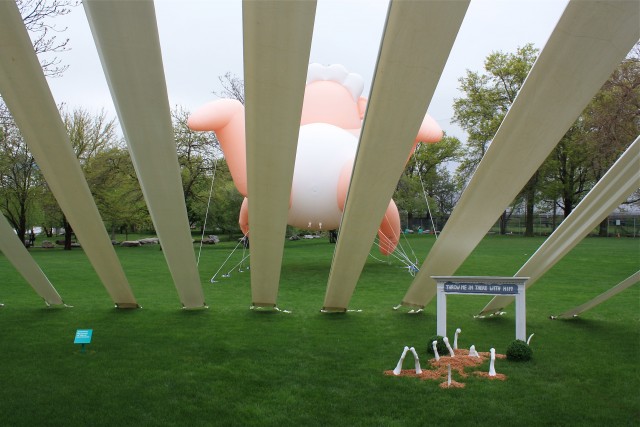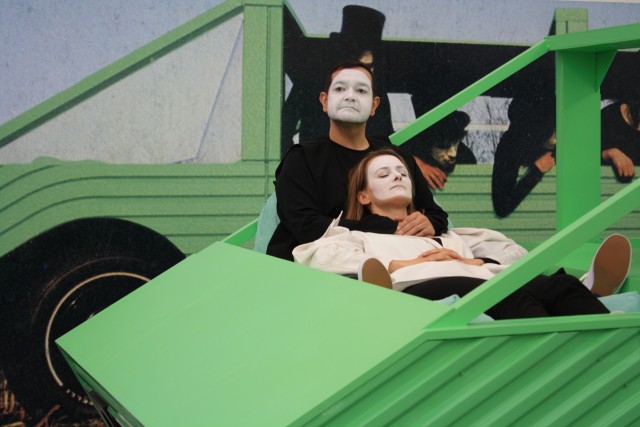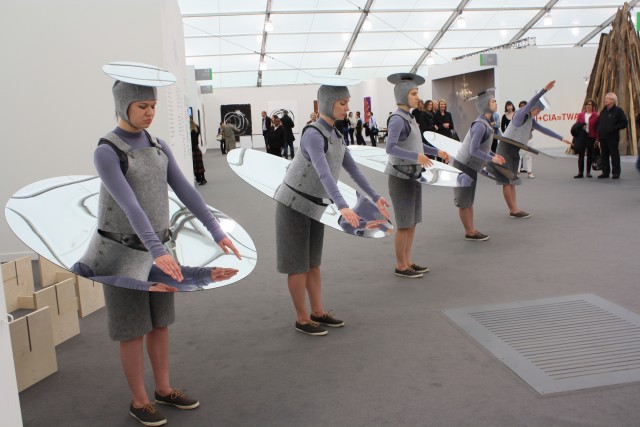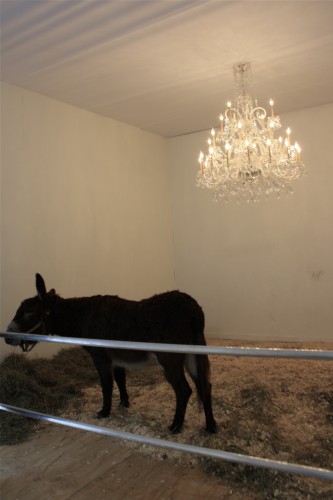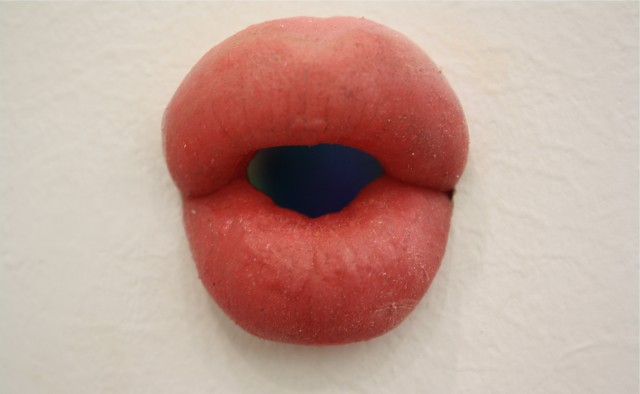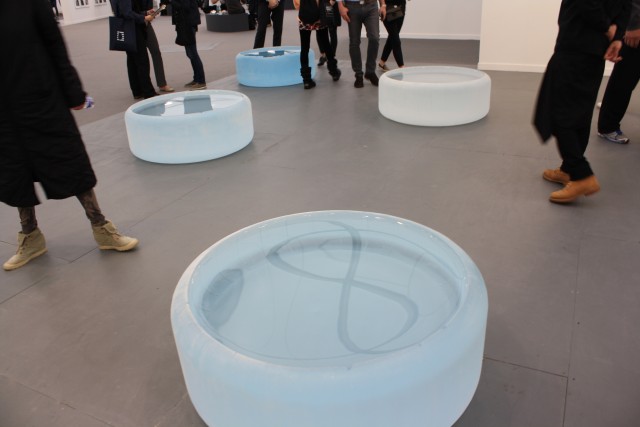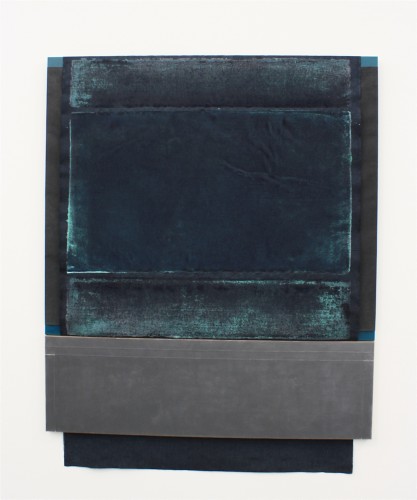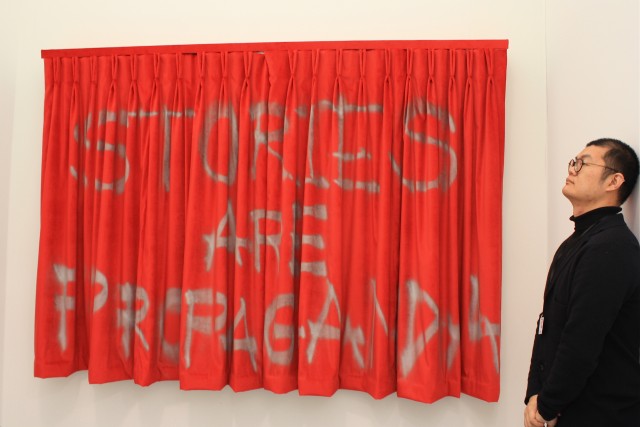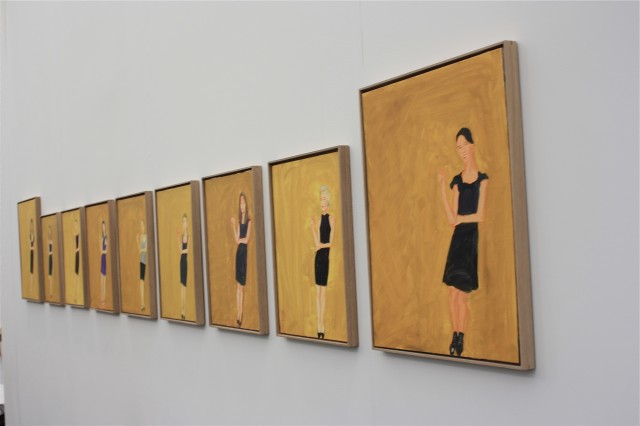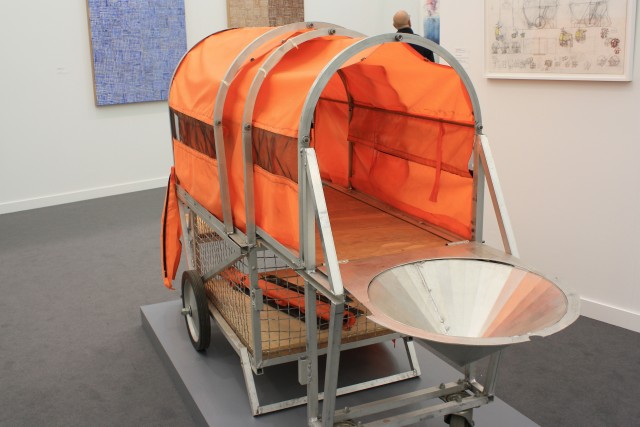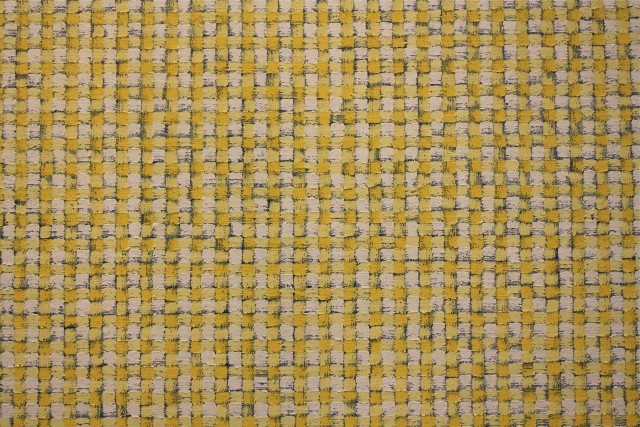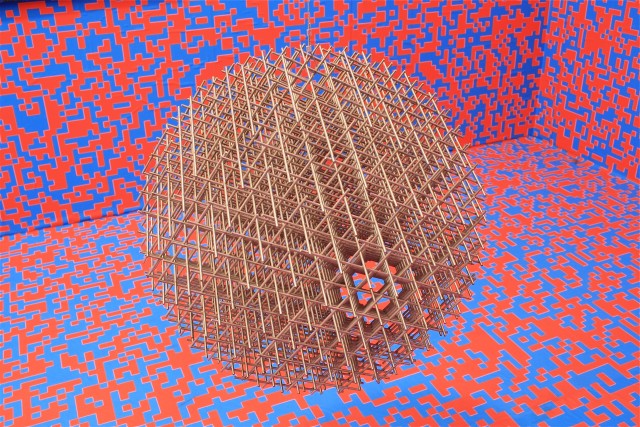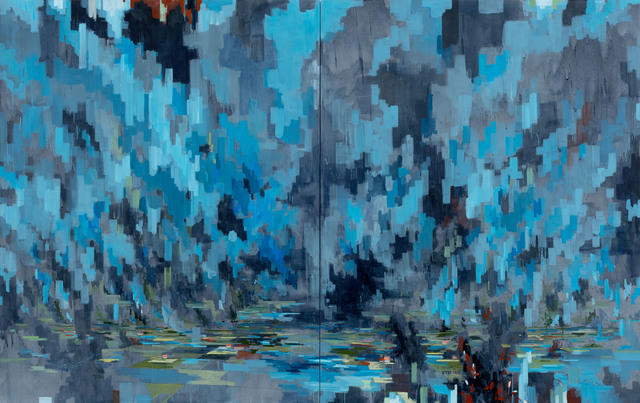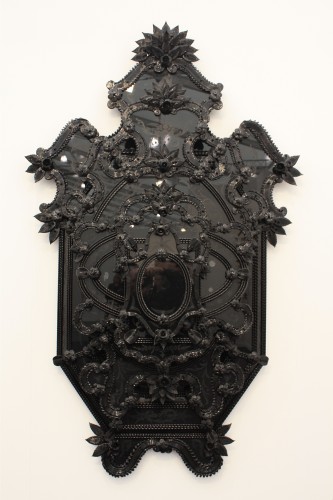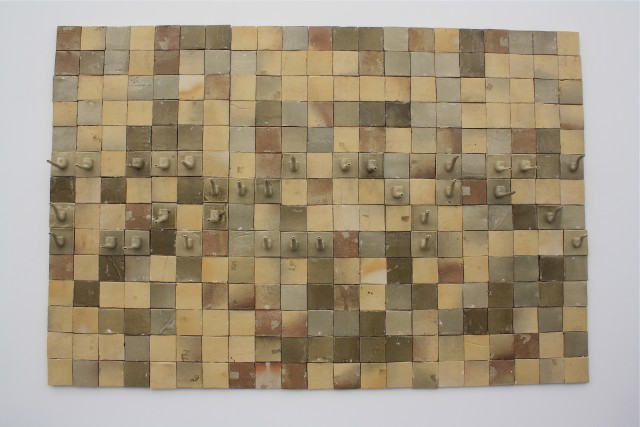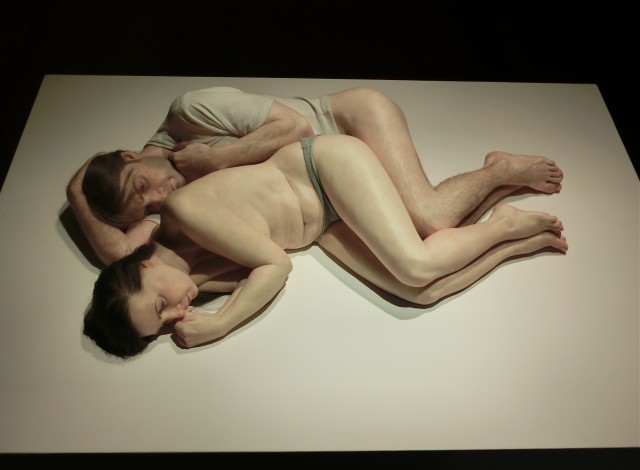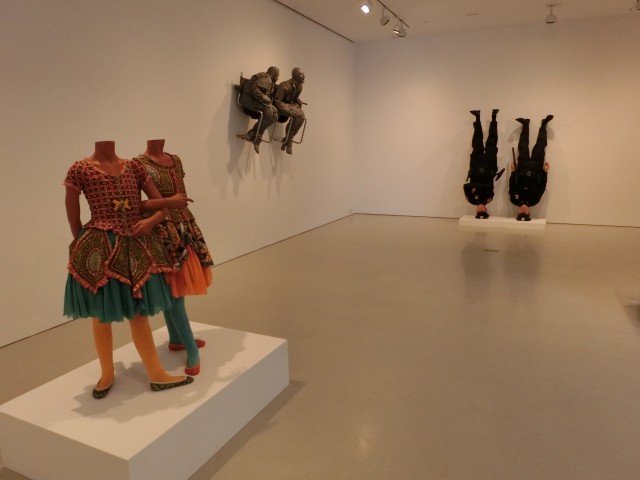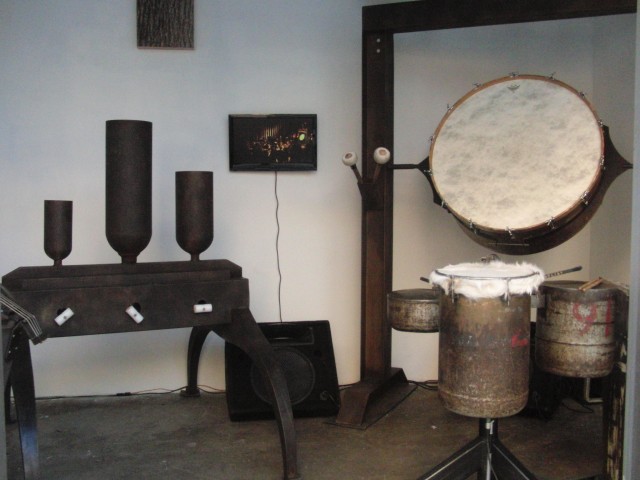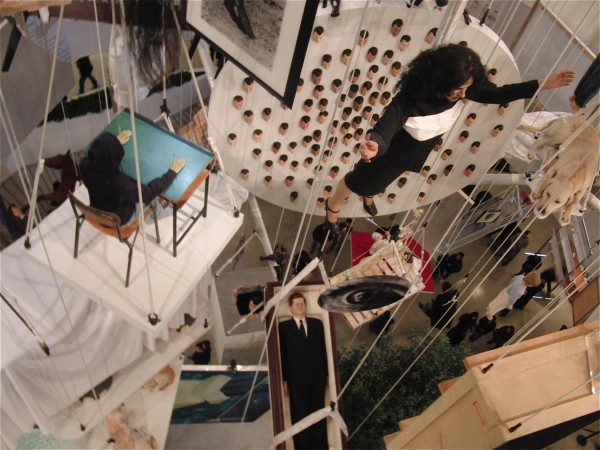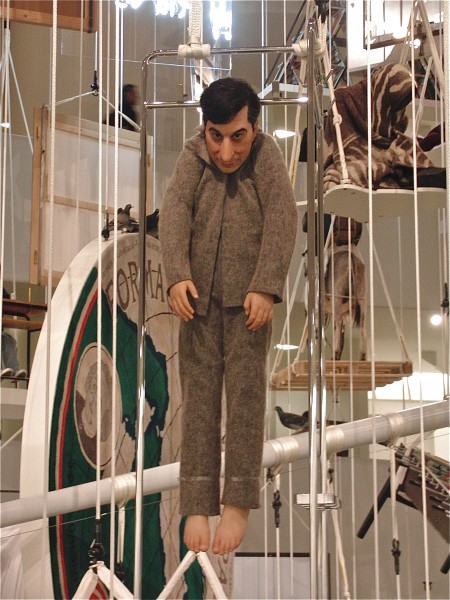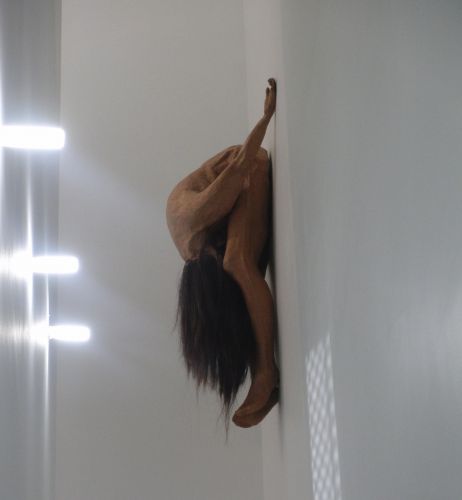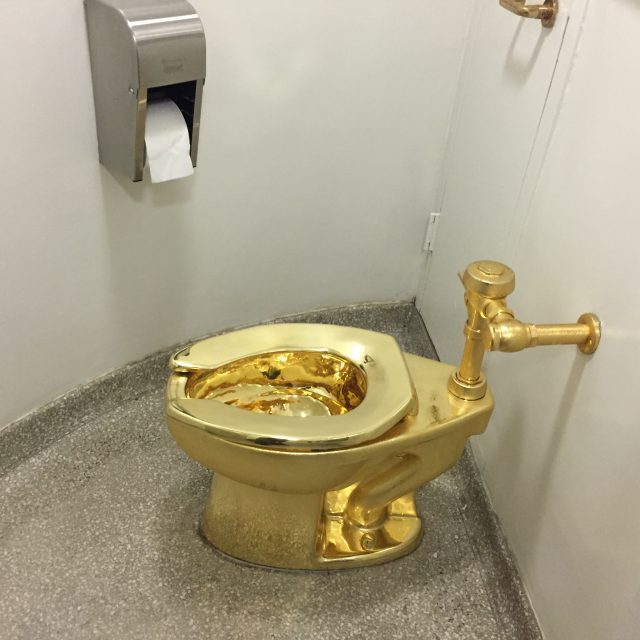
Maurizio Cattelan has replaced the Guggenheim’s fifth-floor toilet with a golden throne called “America” (photo by twi-ny/mdr)
Solomon R. Guggenheim Museum
1071 Fifth Ave. at 89th St.
Friday – Wednesday (ongoing), $18-$25 (pay-what-you-wish Saturday 5:45-7:45)
212-423-3587
www.guggenheim.org
“america slideshow”
In November 2011, Italian artist and prankster Maurizio Cattelan held a very public execution of his career, literally hanging his works from the Guggenheim’s skylight ceiling in a unique and extremely popular retrospective, called “All,” that he said marked his retirement from the art world, at the age of fifty-one. But five years later, the provocateur who drowned Pinocchio (“Daddy Daddy”), dropped a meteor on the pope (“La Nona Hora”), made a gentle, kneeling sculpture of Adolf Hitler (“Him”), taped his gallerist to a wall (“A Perfect Day”), constructed the famous Hollywood sign on a garbage dump in Palermo (“Hollywood”), and placed a giant marble middle finger in front of the Milan stock exchange (“L.O.V.E.”) is back with his first new piece in five years, “America.” In the Guggenheim’s fifth-floor single-occupancy restroom, Cattelan has installed an exact replica of the museum’s standard toilet, cast in glittering eighteen-karat solid gold — and yes, it’s fully functional. Since September 2016, museumgoers have been waiting anywhere from a few minutes to a few hours for the privilege of going number one or number two on the majestic throne, which is obsessively cleaned every fifteen minutes. You must sit on it; the seat should not be lifted, as one unlucky male user discovered early on after breaking it. Although the piece was created before Donald Trump won the presidential election, “America” certainly references his preference for gold objects, particularly when his name is involved; Cattelan has called it “one-percent art for the ninety-nine percent.” (Death might be the great equalizer, but so is the basic human need to evacuate waste; everybody poops.) The piece is also intrinsically linked with Toilet Paper magazine, a publication run by Cattelan and Pierpaolo Ferrari. In addition, the work is an homage to Marcel Duchamp’s “Fountain,” the upside-down porcelain urinal, credited to “R. Mutte,” that was rejected on April 10, 1917, from a supposedly all-inclusive exhibition; the ready-made urinal, which forever changed the art world, is currently celebrating its centennial, with special events and shows being held around the world.
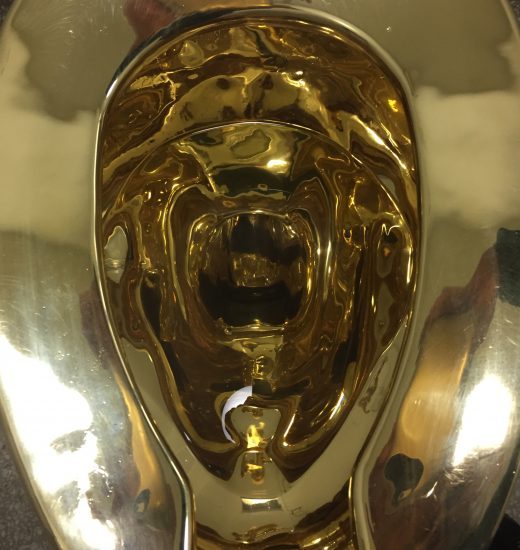
You can do a lot more than just touch this work of art at the Guggenheim (photo by twi-ny/mdr)
“America” is also reminiscent of the scene in Mel Brooks’s History of the World, Part One when a caveman (Sid Caesar) creates the first known work of art, a painting of an animal on a cave wall — and then the first critic (Andréas Voutsinas) comes along and urinates on it. Cattelan has been met with much criticism during his thirty-year career — along with, of course, high praise and works going at auction for millions of dollars — but he’s probably reveling in the thought that so many people are happily relieving themselves on his usable sculpture. In fact, people are so used to being told not to touch art that many of those on line don’t initially understand that “America” is fully participatory; it is not meant to merely be gawked at and photographed. The “Guggen-head,” as Cattelan dubbed it, has also been added to the second edition of the “All” catalog, with former Guggenheim curator Nancy Spector explaining that it offers “unprecedented access to something of unquestionable value.” To find out more about Cattelan, who loves playing games with virtually every aspect of his life and career, check out Maura Axelrod’s documentary Maurizio Cattelan: Be Right Back, which opened April 14 at the Quad; although it is named for Cattelan’s first major show, in which he locked the door of a gallery and put a sign on it that read “Be Right Back” (in Italian), it could also refer to his return to the art world with “America,” which is on long-term view at the Guggenheim; however, there’s been no word whether it’s a onetime thing or the beginning of a new phase of his career, and even if there was, that doesn’t mean it’s real. In the meantime, head over to the Guggenheim and make full use of “America,” coming up with whatever metaphor you’d like as you relieve yourself of at least part of your daily burden. Or just simply enjoy the rare privilege of having private time with a rather beautiful and expensive work of art.
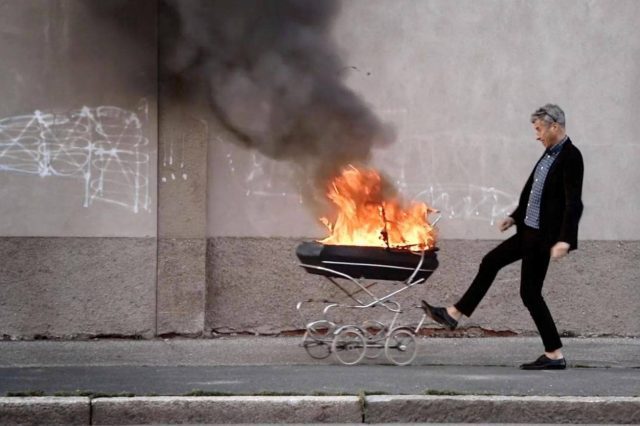
 Italian artist and prankster extraordinaire Maurizio Cattelan has built his wildly successful career out of controversy, provocation, and mystery, taking on the very art world that has made him a superstar. Documentarian Maura Axelrod includes the same elements in her vastly entertaining film, Maurizio Cattelan: Be Right Back. The title refers to both the beginning of Cattelan’s career, a Milan solo show in which he locked the gallery door and hung a sign on it that said “Torno Subito” (Be Right Back) as well as what might or might not be the end, as he announced his retirement following the brilliant 2011 retrospective at the Guggenheim,
Italian artist and prankster extraordinaire Maurizio Cattelan has built his wildly successful career out of controversy, provocation, and mystery, taking on the very art world that has made him a superstar. Documentarian Maura Axelrod includes the same elements in her vastly entertaining film, Maurizio Cattelan: Be Right Back. The title refers to both the beginning of Cattelan’s career, a Milan solo show in which he locked the gallery door and hung a sign on it that said “Torno Subito” (Be Right Back) as well as what might or might not be the end, as he announced his retirement following the brilliant 2011 retrospective at the Guggenheim, 